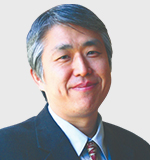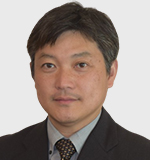2024년 1월 24일(수) / 14:00-17:30 Room A (101-102), 1층
| 분야 | Semiconductor Heterogeneous Integration/Advanced Packaging Technology |
|---|---|
| 대주제 | 이종 반도체 칩의 설계, 공정 및 소재 기술 |
| 강연설명 | 최근 반도체 스케일링 한계를 극복하기 위해 주목받고 있는 이종집적기술의 핵심인 칩 배치/배선 설계, 이종집적 공정/소재 기술의 이슈와 산업계 발전 동향을 소개한다. |
| 좌장 | |
| 연사 |
기존 미세화 방식의 반도체 기술 개발 전략과 다르며, 최근 AI 반도체 및 다기능성 반도체칩의 필요성에 의해 더욱 주목 받고 있는 Heterogeneous integeration을 이해하고자 한다. 다양한 사례와 관련된 기술을 소개하고, 향후 관심을 가져야 할 소재, 공정, 소자에 대한 내용을 발표한다.
|
|
반도체의 scale down 기술의 한계로 인하여 반도체 패키지 기술, 특히 이종 접합(Heterogeneous integration) 기술의 중요성이 커지고 있다. 이러한 기술을 이용한 패키지에서 중요한 구성 요소 중 하나 메모리이다. 본 발표에서는 메모리를 이용한 이종 접합 기술의 기술 트렌드에 대해서 이야기 하려 한다.
|
|
|
이종 집적 반도체를 위한 차세대 패키지 기술의 핵심인 하이브리드 본딩 기술의 최근 기술 개발동향과 향후 전망에 대해서 살펴보고, 하이브리드 본딩의 기본 원리와 앞으로 해결해야 할 문제에 대해서 알아본다.
|
2024년 1월 24일(수) / 14:00-17:30 Room C (103-104), 1층
| 분야 | DRAM, Emerging Memory |
|---|---|
| 대주제 | 3D DRAM |
| 강연설명 | 현재의 6F2 DRAM Cell Scaling의 기술적 도전들을 극복하는 방안으로 제시되고 있는 3D DRAM 개발에 필요한 공정, 소재 및 설계 기술들에 대해서 소개하고자 한다. |
| 좌장 | |
| 연사 |
반도체 기술은 미세화, 3D integration 을 통하여 지속적인 생산성 향상을 유지 해오고 있다. 반도체 공정과 제품 구조의 변화는 새로운 소재, 부품, 장비의 기술 변화를 요구 한다.
예를 들어 미세화의 핵심 기술인 포토공정은 i-line, KrF, ArF, ArFi, DPT, EUV 기술로 전환하여 PR 소재의 변경, Hard mask 물질 변경, DPT etch 관련 major 장비의 market share 역전과 같은 위기와 기회가 공존한다. 본 발표는 DRAM의 2D shrink 기술을 돌아보고, 향후 3D 구조와 Hybrid Bonding으로 전환시에 필요한 기술과 소재, 부품, 장비의 새로운 기회를 찾아 보고자 한다. |
|
최근 3차원 DRAM 소자의 차세대 채널물질로 많은 관심을 받고 있는 산화물 반도체 기술의 기초를 소개하고, 디스플레이 산업에서 성공스토리에 대해 설명한다. 마지막으로 메모리소자 적용을 위한 향후 연구개발 이슈 등을 논의한다.
|
|
|
메인 메모리로서 디램은 고성능/저전력/고용량을 추구하기 때문에 저장되는 신호는 다른 데이터 저장 방식에 비해 약한 신호 특성을 가지고 있다. 따라서 기존의 디램에서도 트랜지스터의 미세화에 따른 문턱전압의 변동성을 극복하고 안정적으로 데이터를 읽어내는 것이 이미 무시할 수 없는 도전 과제로 대두되고 있다. 지금 전개되고 있는 디램의 수직방향으로의 확장은 메모리소자의 변동성을 더욱 더 크게 하여 안정적인 읽기 동작은 큰 난관에 봉착할 수 밖에 없다.
본 강의에서는 소자의 변동성의 원인에 대하여 설명하고 변동성 환경에서 안정적으로 데이터를 읽을 수 있는 기술들을 소개한다. 소자/공정 개발 엔지니어들로 하여금 센싱회로의 원리와 최근 기술들을 소개하여 이해하게 함으로써 소자/설계의 협력을 통해 3차원 메모리소자를 성공적으로 개발하는 DTCO(Design Technology Co-Optimization)의 역량을 높이고자 한다. |
2024년 1월 24일(수) / 14:00-17:30 Room G (201-202), 2층
| 분야 | AI 반도체 설계 |
|---|---|
| 대주제 | Large language model (LLM) |
| 강연설명 | 최신 Transformer 기반의 LLM 서비스를 위한 다양한 레벨의 최적화 기법들을 알아본다. |
| 좌장 | |
| 연사 |
본 세미나에서는 Chat GPT 시대에 준비되어야 할 하드웨어 인프라에 대해서 말씀드리려고 합니다. GPU 시대를 극복하기 위해서 AI반도체가 가져야 할 본질적인 경쟁력과 준비해야 할 마일스톤들에 대해 중점적으로 말씀 드리겠습니다. 큰 규모의 LLM 서비스를 위하여 갖추어야 할 AI 반도체의 성능, 사용성, 그리고 신뢰성에 대해서 구체적으로 살펴보도록 하겠습니다.
|
|
GPU 뿐 아니라 NPU, PIM 등을 포함하는 시스템의 높은 이종성을 활용하기 위해서는 추상화와 최적화를 제공하는 소프트웨어 스택이 매우 중요하다. 이러한 소프트웨어 스택의 전반적인 개발 및 연구 동향에 대해 소개하고, PIM에 특화된 최적화 컴파일러에 대한 최근 연구 내용을 소개한다.
|
|

SC3-3 | 15:50-16:35
Large Language Model Compression and Acceleration Trends
박은혁 교수
POSTECH
강력한 성능의 초거대 언어 모델을 보다 적은 리소스로 활용하기 위해 다양한 경량화 및 가속 기법들이 활발히 연구되고 있습니다. 본 발표에서는 이와 관련된 최신 연구 동향에 대해 소개하고자 합니다.
|
|

SC3-4 | 16:35-17:20
LLM Serving System Optimization for Real-World Applications
김형준 대표
SqueezeBits
LLM을 기반으로 하는 서비스를 실제로 운영할 때 발생할 수 있는 문제점들에 대해 알아보고, 이를 해결하기 위한 시스템 레벨의 최적화 기법들에 대해 소개하고자 한다.
|
2024년 1월 24일(수) / 10:00-17:30 Room I (203-204), 2층
| 분야 | Future Direction in Highspeed Wireline/Optical IO | |
|---|---|---|
| 대주제 | The Future: MMW and Quantum Frontiers: Integration, Design and Innovation | |
| 강연설명 | TBA | |
| 좌장 |

김대현 교수
경북대학교
|

Director of Research
Sorin Cristoloveanu CNRS
|
| 연사 |

SC4-1 | 10:00-11:00
InGaAs FinFET - a vehicle to explore the challenges and potential of III-V nanoscale transistors
Dr. Alon Vardy
MIT
Due to its extraordinary electron transport properties, there has been strong interest in the prospects of InGaAs for advanced logic applications. Extremely scaled 3D transistors such as fin and nanowire, with high aspect-ratio can potentially deliver the required ON and OFF state performance , at reduced operating voltage, therefore paving the way to solve the power bottleneck, responsible for Moore’s law slowdown.
This talk will review recent research on nanoscale InGaAs MOSFETs. It will describe some of the technological advances that have been realized at MIT. The modeling of the ON and OFF state performance of highly scaled finFET will be presented, illustrating both the shortcomings and the advantages of this material system. The process technology and the device modeling techniques hold important lessons and are highly valuable for the development of advanced nano transistors, in other material systems. |
|

SC4-2 | 11:00-12:00
III-V HEMTs for low-noise amplification in quantum computing and radio astronomy
Prof. Jan Grahn
Chalmers University of Technology
Among all semiconducting transistors used in amplification, the III-V HEMT demonstrates the best noise performance from below 1 to 200 GHz. In particular, the InAlAs-InGaAs-InP HEMT or InP HEMT has been proven to amplify with a sensitivity just a few times the quantum-noise limit. Such amplifiers are normally cooled to 4-10 K and find their usage in quantum computing, radio astronomy and physics instrumentation. In this talk, I will summarize the recent development in material and devices for InP HEMT cryogenic low-noise amplifiers used in quantum computing and radio arrays where dc power now also emerges as an essential design parameter.
|
||

SC4-3 | 14:00-15:00
Large-Scale Heterogeneous Device Integration
Dr. Marko Radosavljevic
Intel
Logic transistor scaling and new material and architecture innovations have been one of the main engines driving semiconductor industry for many decades now. In this presentation we explore the role of device stacking and layer transfer techniques may have in transistor density increase beyond nanosheet architectures. Specifically, for logic density improvements, we propose CFET architecture combined with backside power delivery approaches to demonstrate simple circuits in vertical dimension. Moreover, layer transfer techniques can be used to more readily combine dissimilar channel materials in the vertical dimension thereby optimizing transistor performance for NMOS and PMOS separately at these transistor densities. We extend these knowledge and techniques to utilize them to applications beyond logic, such as combining GaN and Si on same wafer via layer transfer techniques for potential future power delivery or RF applications.
|
||

SC4-4 | 15:00-16:00
Highly Efficient Broadband Power Amplifiers Design for
Millimeter-Wave Phased-Array Applications Prof. Donald Lie
Texas Tech University
Monolithic high-efficiency wideband millimeter-wave power amplifiers (mm-Wave PAs) can be critically important for realizing ultra-low-power, miniaturized mm-Wave phased arrays 5G/6G systems, since these PAs can often consume about half of the overall system power budget. This work, therefore, performs fundamental research on the design of broadband 18 - 50 GHz mm-Wave PAs in several state-of-the-art semiconductor technologies for potential various phased-array applications. Specifically, this work takes advantages of some of the most advanced RF (radio-frequency) semiconductor technologies: the HRL’s (Hughes Research Labs) 40 nm GaN T3 process on SiC, GF’s (GlobalFoundries) 22nm CMOS FD-SOI (fully-depleted silicon-on-insulator) and 90 nm SiGe BiCMOS (9HP) processes, together with novel IC (integrated circuits) design techniques, to realize highly-efficient broadband monolithic mm-Wave PAs. This talk primarily reports the design of broadband mm-Wave PAs in the medium output power range of ~ < 20 dBm, with broad bandwidth of ~ 20-30 GHz, excellent broadband peak PAE > ~20 - 45 %, and of good linearity.
|
||

SC4-5 | 16:00-17:00
Millimeter-Wave GaN HEMTs: Scaling Challenges & Epitaxial/Device Co-Design Approaches
Dr. Keisuke Shinohara
Teledyne
Recent advancements in GaN HEMT technologies have enabled millimeter-wave power amplifier MMICs that operate at W- and D-band frequencies. Next-generation millimeter-wave RF systems require compact and cost-effective MMICs with higher output power, efficiency, and linearity, as well as wider bandwidth. The frequency performance of GaN HEMTs has been successfully improved through transistor scaling. However, scaled GaN HEMTs exhibit increased DC-RF dispersion, a reduced breakdown voltage, higher junction temperatures, and limited reliability due to localized high electric fields. These factors hinder reliable high-power, high-efficiency operation at high frequencies. Furthermore, the abrupt pinch-off characteristics of scaled GaN HEMTs degrade transistor linearity. In this presentation, we will discuss our epitaxial/device co-design approaches to address the scaling challenges mentioned above and to break the traditional performance trade-off in millimeter-wave GaN HEMTs.
|
||











